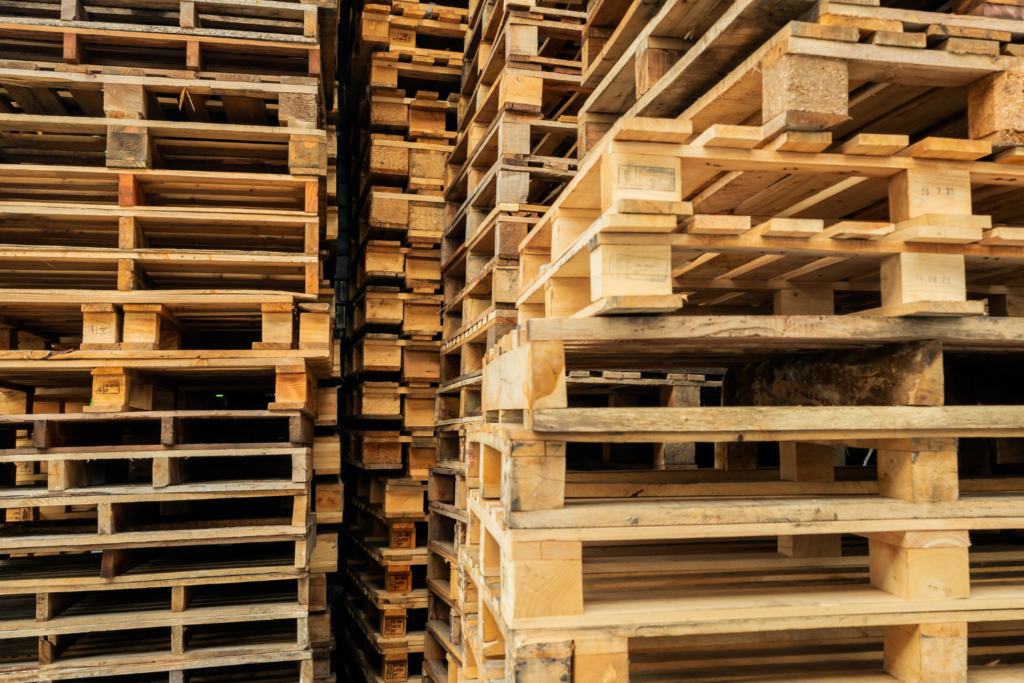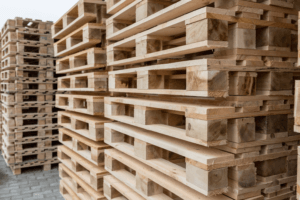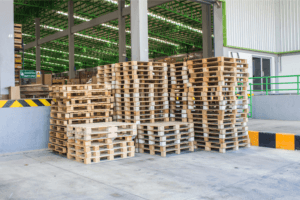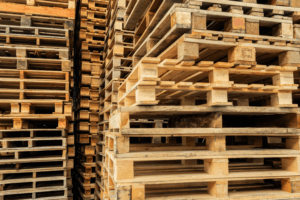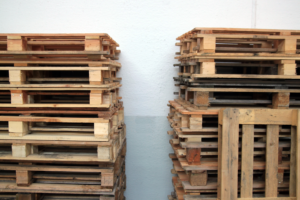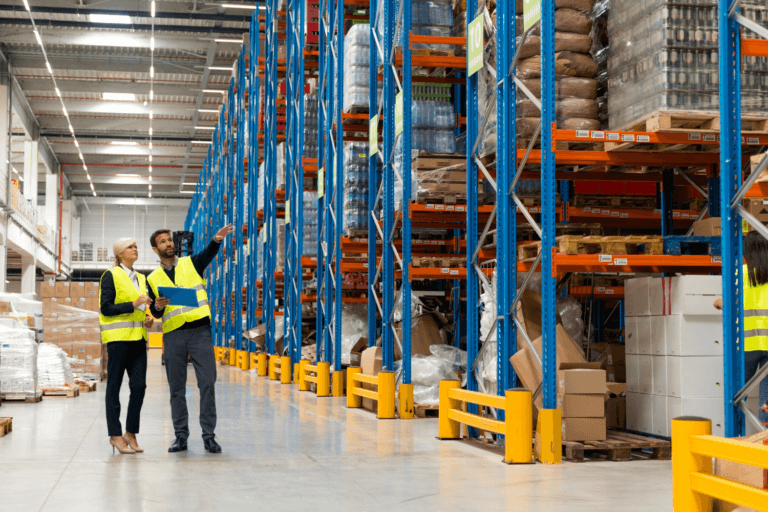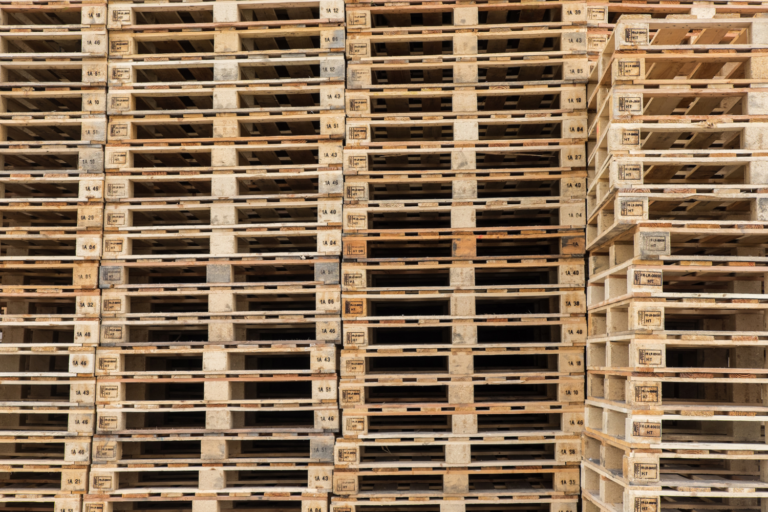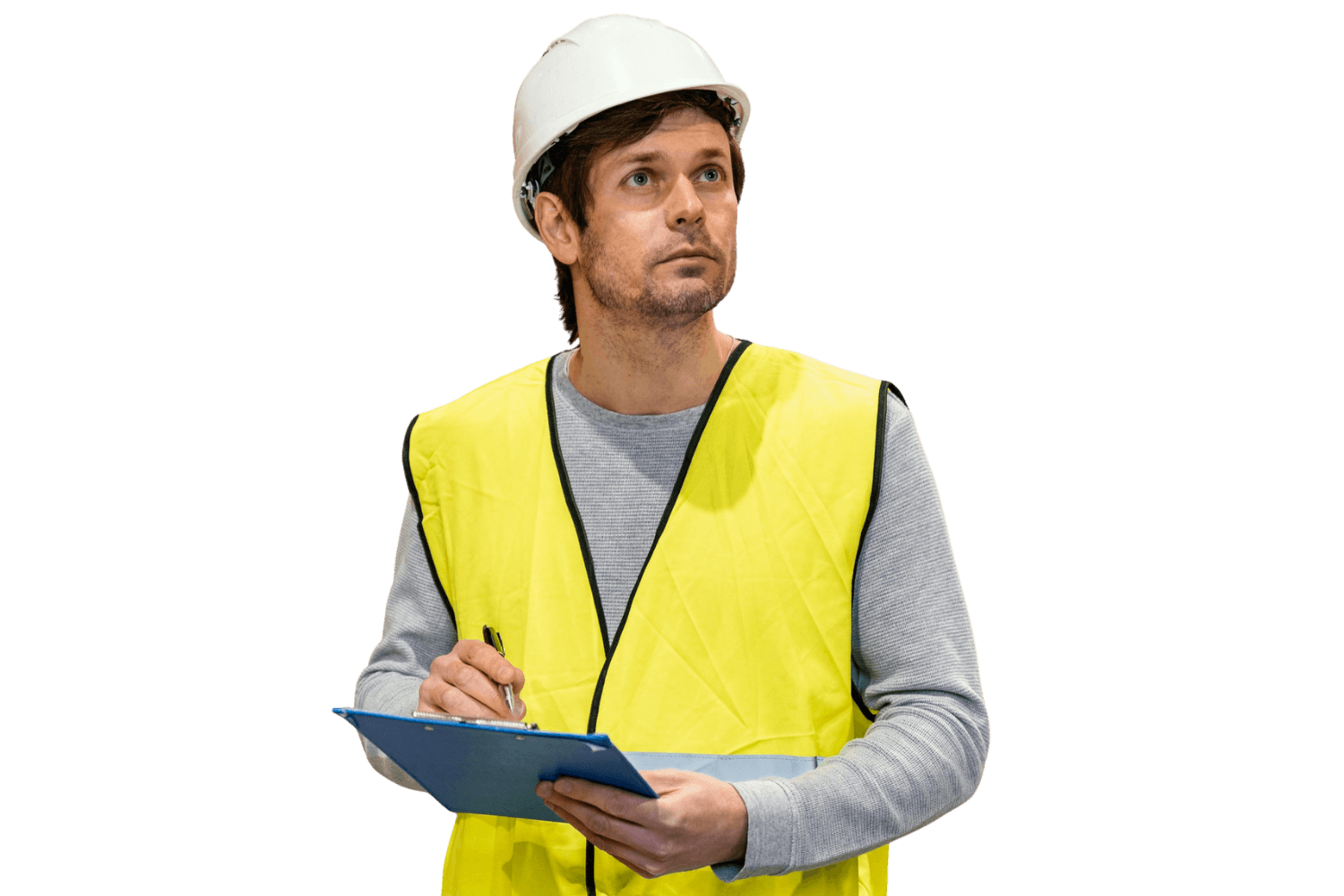Stringer and block pallets differ significantly in their construction, strength, and usability.
Stringer pallets feature long, horizontal boards called stringers, which run between the top and bottom deck boards to provide support.
Block pallets, on the other hand, use solid blocks positioned at key structural points, including the corners and center, to support the deck.
Let us further discuss stringer vs. block pallets.
What Are Stringer Pallets?
Stringer pallets use horizontal boards, known as stringers, to support the top deck.
These stringers run along the length of the pallet and provide the primary support structure.
Typically made from wood, they have openings on two sides, allowing a forklift to access them for easy lifting and transport.
However, with additional notching, they can also be designed for four-way entry, like in the case of GMA pallets, improving their versatility.
They can be repaired more easily than more complex designs, which makes them popular in industries looking to minimize costs and extend the lifecycle of their materials.
But they tend to be less strong than block pallets, especially when it comes to heavier loads.
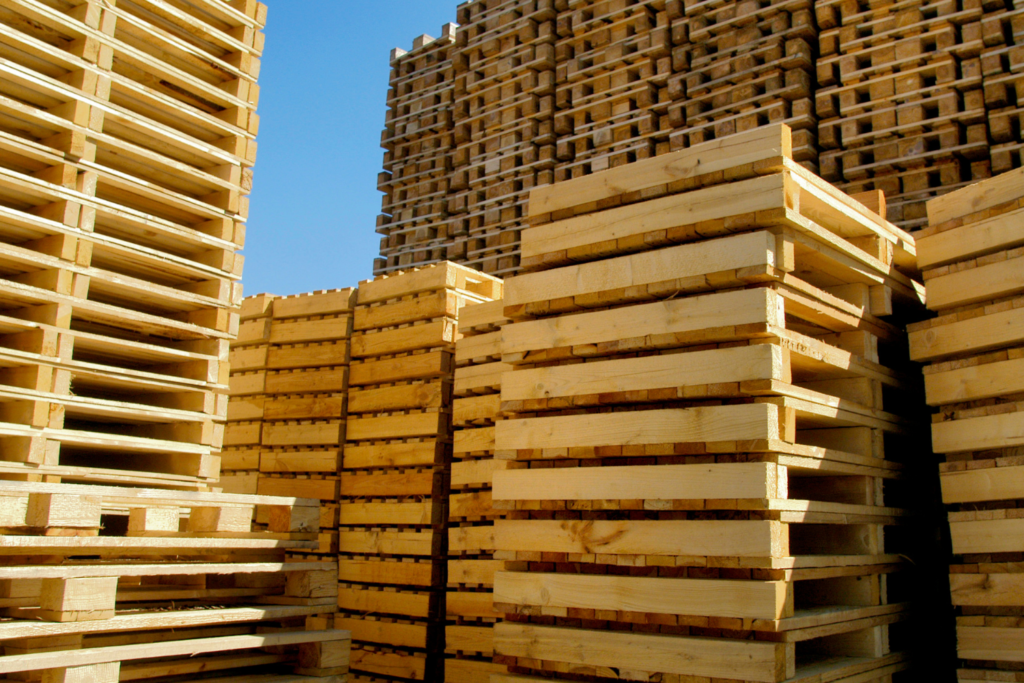
What Are Block Pallets?
Block pallets are characterized by their robust design, using blocks as the main support structure.
They have solid blocks in each of the pallet’s corners, as well as at the center of each side and sometimes in the middle.
This configuration provides superior strength and stability, allowing forklifts to access the pallet from all four sides, which enhances their ease of use in both manual and automated handling systems.
They are often considered more durable than stringer pallets due to their stronger construction.
The block design allows them to support larger and heavier loads more effectively, which is why they are frequently used in industries such as manufacturing, construction, and international shipping.
Stringer vs. Block Pallets: 3 Major Differences
Stringer pallets and block pallets differ in several key ways that impact their functionality and suitability for different applications.
Below are some of the major differences between stringer and block pallets.
1. Stringer Pallets Have Stringers Running Between the Top and Bottom Deck Boards Acting as a Frame
Stringer pallets have stringers, which are long, horizontal beams running between the top and bottom deck boards that act as a frame, providing the main support for the pallet.
They are spaced along the length of the pallet, typically with one stringer on each side and another in the middle.
This design is straightforward and effective for lighter loads but may not offer the same level of durability and strength as block pallets.
The stringers create a stable platform but are more prone to damage under heavy loads or rough handling.
2. Block Pallets Are Generally Stronger Than Stringer Pallets Because They Use Solid Blocks for Support
Block pallets use solid blocks to support the deck boards, which provides a more robust and stable base.
These blocks are positioned at each corner of the pallet, with additional blocks in the center, giving them greater strength and resistance to bending or breaking under heavy loads.
This makes block pallets generally stronger than stringer pallets and better suited for industries that require high-performance pallets capable of handling substantial weight.
The use of solid blocks allows for a more even distribution of weight, increasing the pallet’s durability over multiple uses, which is particularly important in heavy-duty shipping environments.
3. Stringer Pallets Are Accessible From Two Sides While Block Pallets Allow Access From All Four Sides
Normal stringer pallets are accessible from only two sides, which means forklifts can only lift them from the front or back. Notches can be added to allow for four-way entry.
In contrast, block pallets are designed for four-way entry as a standard feature.
This four-way access makes them more versatile and efficient in environments where pallets need to be quickly and easily maneuvered in different directions.
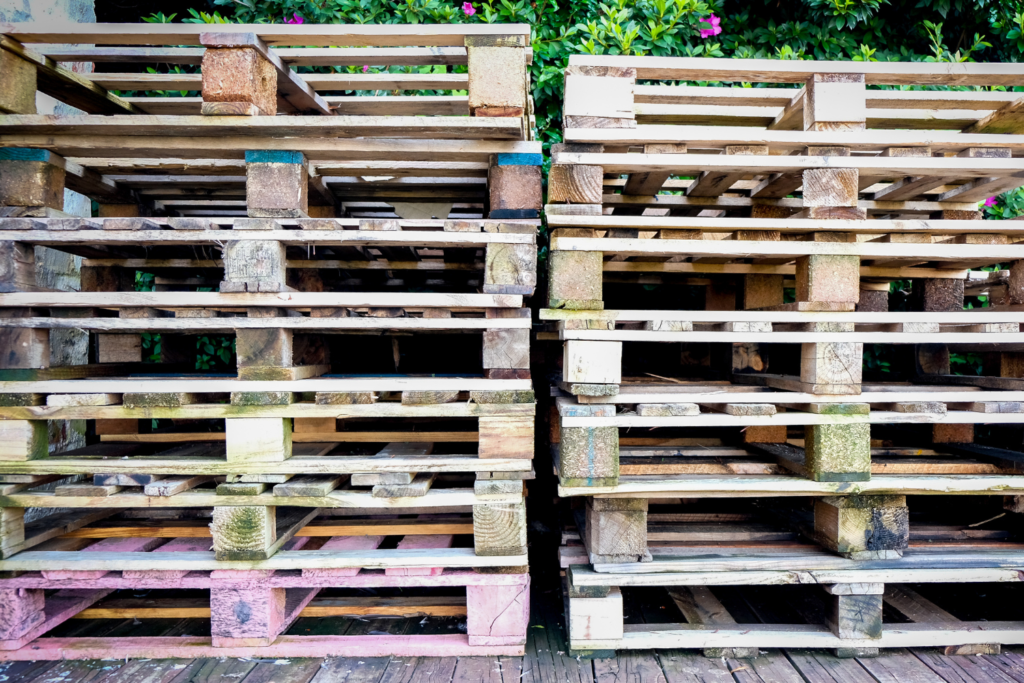
When Is It Best to Use Stringer Pallets?
Stringer pallets are often the best choice in several specific scenarios, particularly when certain priorities align with their unique characteristics.
Below are the situations where stringer pallets may be the best type to use.
1. You Are Looking for Budget-Friendly Pallets
Stringer pallets tend to be more affordable than block pallets, primarily because their construction is simpler, using fewer materials.
This cost-effective design makes them ideal if you need to keep your logistics and shipping expenses low.
2. You Will Deliver Lightweight Items
Since stringer pallets are generally less robust than block pallets, they are better suited for transporting goods that don’t place significant strain on the pallet structure.
If you transport products such as consumer goods, packaging materials, or other relatively light items, you can use them to minimize costs without sacrificing functionality.
The lighter load requirements of such items reduce the wear and tear on the pallets, allowing them to be reused more often without sustaining damage.
3. You Want Pallets That Are Easy to Repair
Due to their simpler design, stringer pallets can often be repaired more easily than block pallets. If a stringer is damaged, it can typically be replaced or fixed at a lower cost.
Being able to repair and reuse them means less waste and reduced costs over time, which is a significant advantage if you handle large volumes of pallets and need to extend their use.
4. You Are Required to Use Stringer Pallets
Certain industries may require the use of stringer pallets for consistency or compatibility with their existing logistics infrastructure.
In these situations, you must adhere to the specified pallet type to avoid issues, even if there are alternative designs available.
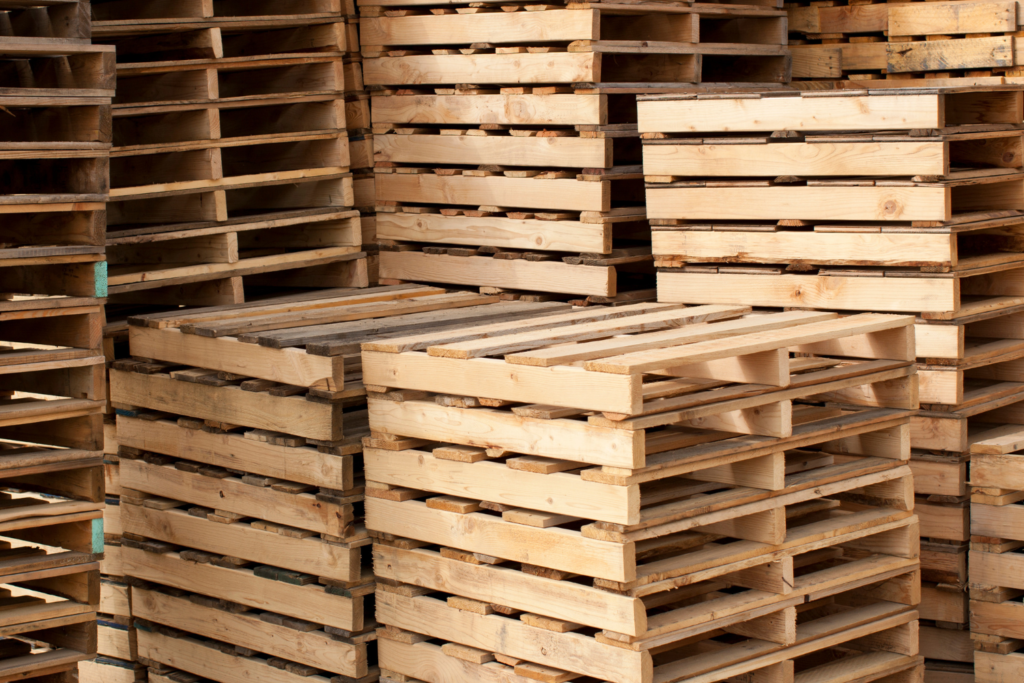
When Is It Best to Use Block Pallets?
When is it best to use block pallets? Block pallets are often the preferred choice in certain scenarios where strength and versatility are critical.
Let us talk about that below.
1. Your Items Are Heavy
Block pallets are designed to handle substantial weight loads, thanks to their robust construction, which features solid blocks supporting the pallet’s structure.
These blocks provide greater strength and stability, allowing them to withstand the stress of carrying heavy items without bending or breaking.
Industries such as manufacturing, construction, and those handling bulk materials or large equipment often favor them for their superior ability to support high-weight capacities.
2. You Want Pallets That Can Be Picked Up From Any Side
Unlike stringer pallets, which are typically only accessible from two sides, block pallets can be picked up from any side, providing four-way entry for forklifts and pallet jacks.
This design makes them more versatile and efficient in warehouses, loading docks, or shipping facilities where maneuverability is important.
Being able to access the pallets from all sides reduces the time and effort needed to move them around. This makes operations smoother and more flexible.
3. You Are Required to Use Block Pallets
There are situations where you may be required to use block pallets due to industry standards, customer demands, or compatibility requirements.
Some industries or specific regions, such as in Europe, rely on block pallets for their logistical needs. Certain shipping operations are optimized for block pallet dimensions and designs, too.
They are often used for international shipping, as they tend to meet the stringent requirements for durability and consistency needed to handle long-distance transport.
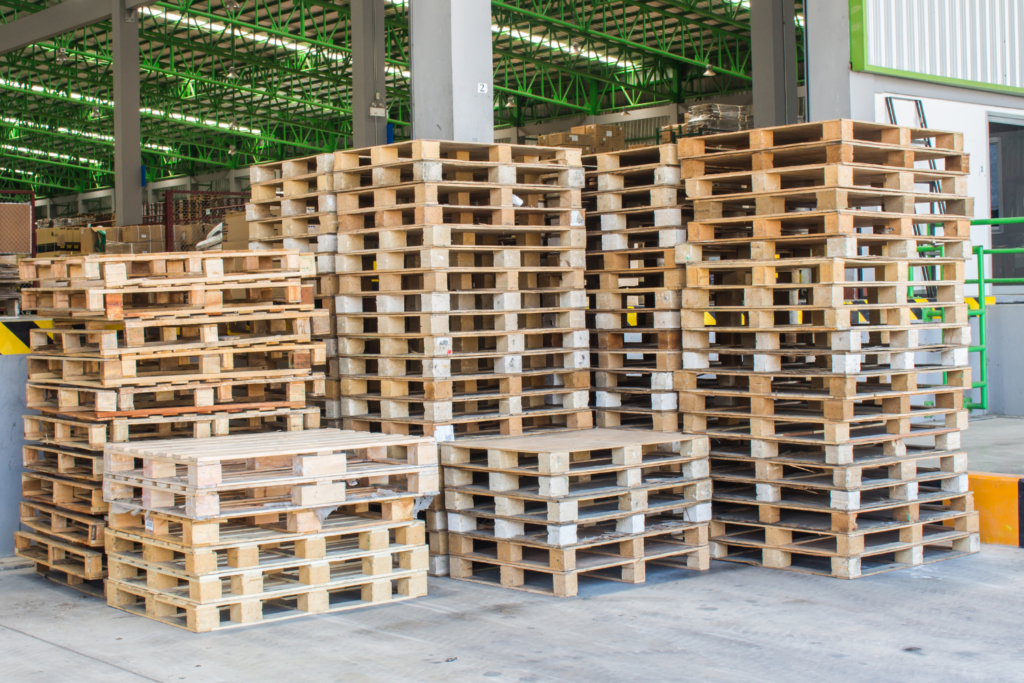
Conclusion
You must weigh the demands of your operations when choosing between stringer and block pallets.
Factors such as the weight of the goods, the need for ease of handling, and long-term cost considerations all play a role in determining the best pallet type.
In environments where lighter goods are transported, or where budget constraints are a primary concern, stringer pallets offer a practical and affordable solution.
However, in fast-paced or automated settings, block pallets provide the resilience and ease of use needed to optimize performance.
Learn about our pallet products on this page. If you need help with choosing which type is the best for you, feel free to contact us and we’d be happy to help.
Chesapeake Pallets has been helping companies across the United States level up their logistics, one pallet at a time.
For inquiries, email info@chesapeakepallets.com or request a quote below!

